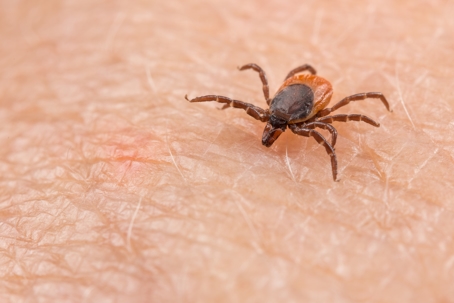Ticks in Urban and Suburban Areas: How to Protect Yourself and Your Loved Ones
Ticks are more than a nuisance; they’re a growing public health concern, especially in urban and suburban areas where they thrive. Understanding their behavior, habitats, and effective control measures is key to safeguarding your home and family.
Common Tick Species and Their Behavior
Ticks, like black-legged (deer) ticks and lone star ticks, are commonly found in suburban neighborhoods, parks, and gardens. They adapt well to areas with vegetation and wildlife corridors, such as green spaces near homes. These ticks thrive in moist, shaded environments and rely on questing behavior to attach to hosts, including humans and pets.
Ticks have four life stages – egg, larva, nymph, and adult. They require a blood meal at most stages, making them efficient disease vectors. For instance, nymphs are notorious for transmitting Lyme disease during the spring and summer months when outdoor activity increases.
Why Do Ticks Thrive in Urban Areas?
Several environmental factors contribute to the rise in tick populations across cities and neighborhoods. Changes in climate, with milder winters and prolonged humid seasons, boost tick survival rates. Additionally, landscaping patterns like dense vegetation and mulch beds provide ideal habitats. Wildlife-friendly initiatives, while beneficial for biodiversity, unfortunately, increase access to tick hosts like deer and rodents.
Protect Yourself and Your Pets from Ticks
Preventive strategies are essential for minimizing tick exposure. Use these tips to keep yourself and your pets safe:
- For You: Wear light-colored, long clothing when outdoors and apply EPA-approved tick repellents like DEET. Conduct thorough tick checks after activities like hiking or gardening.
- For Pets: Use vet-approved prevention products such as tick collars, topicals, or chewables. Check common hiding places like ears, paws, and underbelly after outdoor play.
If you find a tick, remove it carefully using fine-tipped tweezers. Avoid twisting; pull straight up to reduce the chance of leaving parts behind. Clean the area and monitor for signs of a rash or illness.
Practical Landscaping to Deter Ticks
To make your yard less inviting to ticks, consider these sustainable practices:
- Keep grass mowed and remove leaf piles or debris.
- Place mulch barriers around recreational areas.
- Incorporate tick-repellent plants like lavender and marigold.
Community and Professional Solutions
Combatting tick populations often requires a collective approach. Community awareness programs, coupled with expert pest control services, can significantly reduce risks. Combat Pest Control offers customized, environmentally conscious tick prevention plans to help residents maintain safe outdoor spaces.
Take Action Against Ticks
Protect your family and pets today with the right strategies. If ticks are a concern in your area, reach out to Combat Pest Control at (781) 746-7393. Together, we’ll ensure your property stays tick-free all year round.

